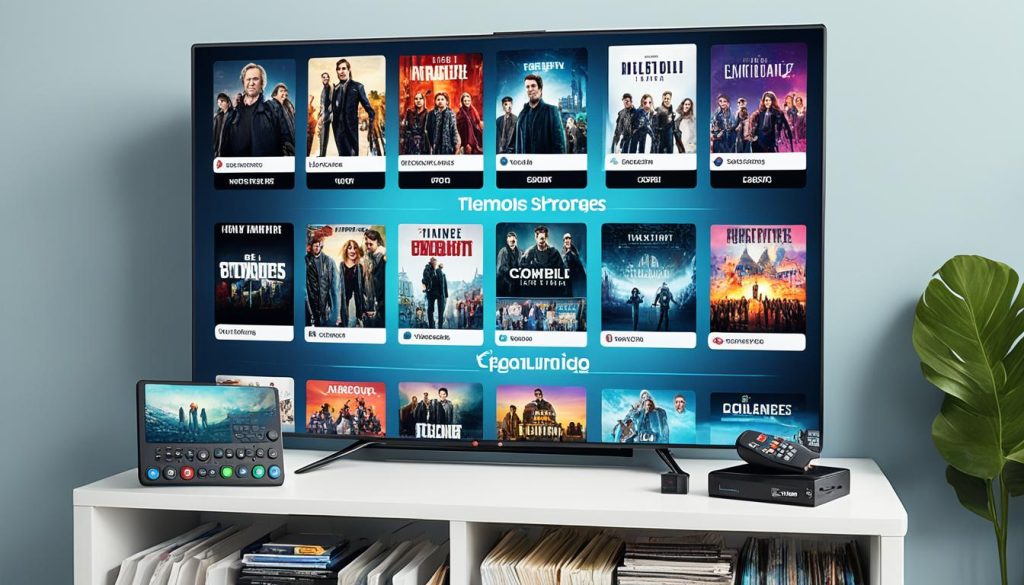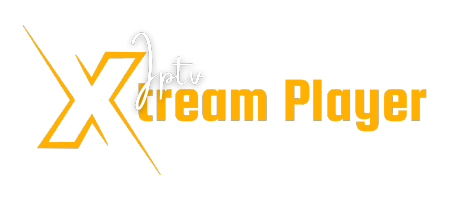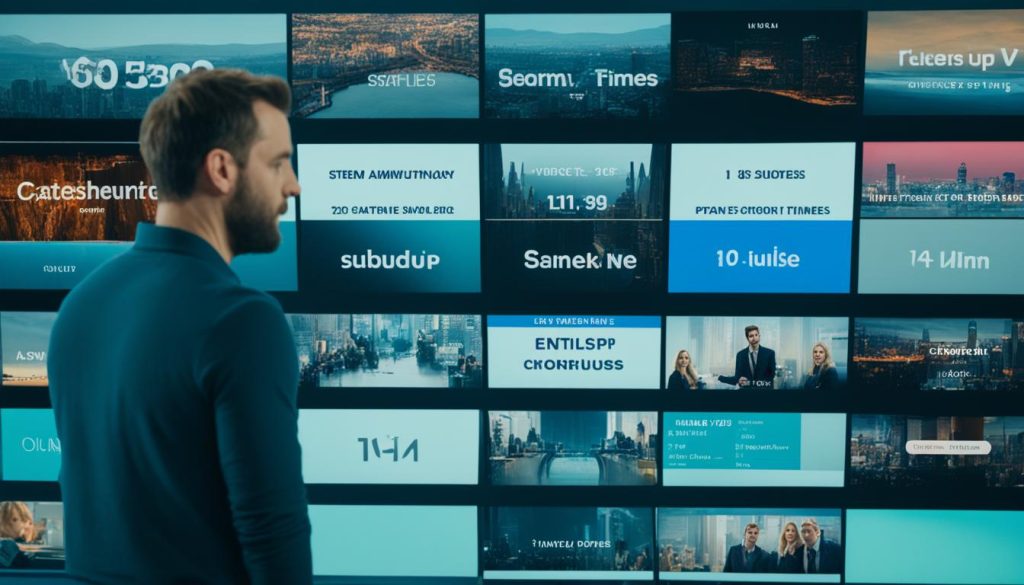Catch-up TV allows IPTV subscribers to watch previously broadcasted TV programmes that have been recorded by their IPTV service. This feature enables viewers to access content they may have missed, typically within a certain timeframe such as 7 days or 14 days. The catch-up functionality is made possible by the IPTV provider storing the content on their servers or in the cloud, and then streaming it on-demand to the subscriber’s device. This provides convenience and flexibility, allowing viewers to watch their favourite shows whenever they want, without having to worry about recording them.
Key Takeaways
- Catch-up TV enables IPTV subscribers to access previously aired TV programmes on-demand.
- IPTV providers store the recorded content on their servers or in the cloud, and then stream it to subscribers’ devices.
- This feature provides convenience and flexibility, allowing viewers to watch missed shows at their convenience.
- Catch-up TV is typically available for a limited timeframe, such as 7 or 14 days, after the original broadcast.
- The catch-up functionality is integrated with the IPTV service’s Electronic Programme Guide (EPG) for easy navigation.
Understanding Catch-Up TV and Time-Shift on IPTV
One of the key features that sets IPTV apart from traditional television is the availability of catch-up TV and time-shift functionality. These innovative capabilities provide subscribers with unprecedented control over their viewing experience, catering to their personal preferences and schedules.
What is Catch-Up TV?
Catch-Up TV is a popular feature offered by many IPTV providers that allows subscribers to access previously aired television programmes. This time-shifted viewing experience enables viewers to catch up on content they may have missed, typically within a 7-day or 14-day timeframe. The IPTV provider stores the recorded shows on their servers or in the cloud, making them available for on-demand streaming to the subscriber’s device. This convenient functionality offers viewers the flexibility to watch their favourite programmes whenever it suits their schedule, rather than being restricted to the original broadcast times.
Time-Shift and Pause Live TV
In addition to catch-up TV, IPTV platforms often provide time-shift capabilities, which give subscribers greater control over their viewing experience. This DVR-like functionality allows viewers to pause, rewind, and fast-forward live television, enabling them to take a break, re-watch a particular scene, or skip through content they’re not interested in. By combining catch-up TV and time-shift features, IPTV providers offer a personalised and flexible viewing experience that adapts to the needs and preferences of individual subscribers.
| Feature | Description |
|---|---|
| Catch-Up TV | Allows subscribers to access previously aired television programmes, typically within a 7-day or 14-day timeframe, providing on-demand streaming of missed content. |
| Time-Shift | Enables viewers to pause, rewind, and fast-forward live television, giving them greater control over their viewing experience and the ability to tailor it to their preferences. |
| Personalised TV Viewing | The combination of catch-up TV and time-shift features provides subscribers with a customised viewing experience that adapts to their schedules and preferences. |
How does catch-up TV work on IPTV?
To enable Catch-Up TV functionality, IPTV providers need to have a robust and scalable infrastructure that can handle the storage and streaming of large amounts of video content. This typically involves storing the recorded programmes on their servers or in a cloud-based platform, and then delivering the content to subscribers on-demand when they request to watch a missed show. IPTV providers also need to ensure that the content is protected from piracy and unauthorised access, through the use of encryption and other security measures.
IPTV Content Storage and Streaming
IPTV providers leverage IPTV content storage and cloud-based streaming to power their Catch-Up TV services. By maintaining a scalable infrastructure, they can accommodate the on-demand access needs of their subscribers, ensuring a seamless user experience when accessing past broadcasts.
Accessing Missed Shows and Past Broadcasts
When using Catch-Up TV on an IPTV platform, subscribers can access missed shows and past broadcasts by navigating through the provider’s catch-up libraries. This is often integrated into the Electronic Programme Guide (EPG), allowing viewers to easily scroll back in time and select the content they want to watch. The seamless integration of Catch-Up TV with the EPG provides a time-travel viewing experience, enabling subscribers to watch programmes they may have previously missed.
Controlling Playback with Time-Shift
In addition to Catch-Up TV, IPTV platforms often offer Time-Shift functionality, which allows subscribers to pause, rewind, and fast-forward live television. This provides viewers with greater control over their viewing experience, enabling them to pause a programme to take a break, rewind to re-watch a particular scene, or fast-forward through content they’re not interested in. The combination of Catch-Up TV and Time-Shift features gives IPTV subscribers a personalised and flexible viewing experience that caters to their preferences and schedules.

Conclusion
The rise of IPTV has revolutionised the way viewers engage with television content, with catch-up TV and time-shifted viewing emerging as key features that cater to the modern viewer’s preferences and schedules. By offering on-demand access to previously aired programmes and the ability to pause, rewind, and fast-forward live TV, IPTV providers are delivering a personalised TV experience that is resonating with subscribers.
As IPTV technology continues to evolve, the integration of catch-up TV and time-shift functionality is poised to become a significant differentiator for IPTV service providers. By enabling viewers to access missed shows, control their viewing experience, and tailor their entertainment to their individual needs, these features are making IPTV a more appealing alternative to traditional television.
Looking ahead, the subscriber benefits of IPTV’s catch-up TV and time-shift capabilities are likely to drive further adoption and innovation within the industry. As IPTV providers strive to offer a more engaging and tailored viewing experience, the seamless integration of these features will be crucial in attracting and retaining loyal customers in the competitive landscape of the modern television landscape.
FAQ
What is Catch-Up TV?
Catch-Up TV allows IPTV subscribers to watch previously broadcasted TV programmes that have been recorded by their IPTV service. This feature enables viewers to access content they may have missed, typically within a certain timeframe such as 7 days or 14 days.
How does Catch-Up TV work on IPTV?
The catch-up functionality is made possible by the IPTV provider storing the content on their servers or in the cloud, and then streaming it on-demand to the subscriber’s device. This provides convenience and flexibility, allowing viewers to watch their favourite shows whenever they want, without having to worry about recording them.
What is Time-Shift on IPTV?
Time-Shift is another feature often available on IPTV platforms, which allows viewers to pause, rewind, and fast-forward live television. This DVR-like functionality gives subscribers more control over their viewing experience, enabling them to pause a programme to take a break, rewind to re-watch a particular scene, or fast-forward through content they’re not interested in.
How do IPTV providers enable Catch-Up TV?
To enable Catch-Up TV functionality, IPTV providers need to have a robust and scalable infrastructure that can handle the storage and streaming of large amounts of video content. This typically involves storing the recorded programmes on their servers or in a cloud-based platform, and then delivering the content to subscribers on-demand when they request to watch a missed show.
How do subscribers access Catch-Up TV content?
When using Catch-Up TV on an IPTV platform, subscribers can access missed shows and past broadcasts by navigating through the provider’s catch-up libraries. This is often integrated into the Electronic Programme Guide (EPG), allowing viewers to easily scroll back in time and select the content they want to watch.



